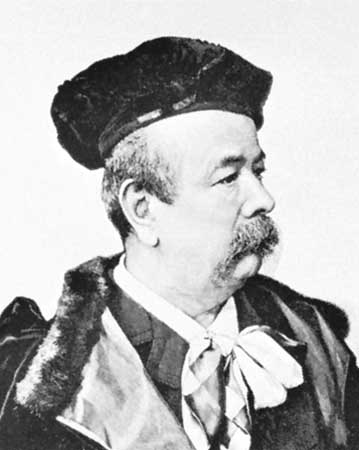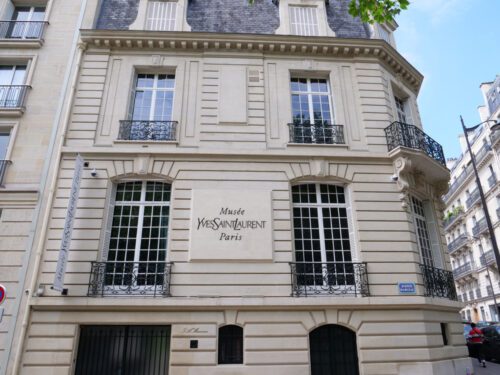
The origins of haute couture can be traced back to the early 19th century, when a group of fashion-forward French designers decided to take the art of dressmaking to new heights. These designers, known as the “haute couturiers,” were determined to create garments that were not only fashionable, but also functional and comfortable.


The story of haute couture begins with a man named Charles Frederick Worth, who is often referred to as the “father of haute couture.” Worth was born in England in 1825, but he moved to Paris in the 1840s to pursue a career in fashion. He quickly gained a reputation as a skilled seamster, and by the 1850s he had opened his own fashion house.
Worth was a visionary in the world of fashion, and he is credited with introducing many of the elements that we now associate with haute couture. He was the first designer to use live models to showcase his clothing, and he is also credited with popularizing the concept of the “fashion show.” Worth's fashion shows were elaborate affairs, with models parading down the runway in the latest designs. These shows were attended by the elite of Parisian society, and they helped to establish Worth as a leading figure in the world of fashion.
But Worth was not content to simply create beautiful clothing. He was also a master of marketing, and he knew that the key to success in the fashion industry was to create an air of exclusivity around his brand. To this end, he began using the term “haute couture” to describe his high-end clothing line. The term, which translates literally as “high sewing,” became synonymous with luxury and exclusivity, and it helped to establish Worth as a leader in the fashion world.
Worth's success inspired other designers to follow in his footsteps, and by the end of the 19th century there were dozens of haute couturiers operating in Paris. These designers were known for their attention to detail and their ability to create garments that were both fashionable and functional. They were also known for their willingness to push the boundaries of fashion, and many of the styles that they introduced went on to become classic staples of the fashion world.


One of the most famous haute couturiers of this era was Coco Chanel, who is credited with revolutionizing the way that women dressed. Chanel was born in France in 1883, and she began her career as a milliner. She quickly gained a reputation for her chic and practical designs, and by the 1920s she had opened her own fashion house.
Chanel is perhaps best known for her simple, elegant clothing, which was a stark contrast to the frilly and ornate styles that were popular at the time. She was also a pioneer in the use of jersey fabric, which was a new and innovative material that was comfortable and easy to wear. Chanel's designs were a hit with women all over the world, and she became one of the most influential designers of the 20th century.
The history of haute couture is not without its amusing anecdotes. One of the most famous stories involves the legendary designer Christian Dior, who is credited with bringing the “New Look” to the world of fashion. Dior was born in France in 1905, and he began his career as an art gallery owner. He eventually turned his attention to fashion, and in 1947 he introduced his first collection, which was an instant hit.


The “New Look” was characterized by full skirts, cinched waists, and flowing skirts, and it was a radical departure from the more utilitarian styles that had been popular during World War II. Dior's designs were a hit with women all over the world, and he quickly became one of the most sought-after designers in the industry.
However, not everyone was a fan of Dior's extravagant and opulent designs. One amusing anecdote about Dior involves a group of American buyers who were visiting his Paris showroom in the 1950s. As they were perusing the latest collection, one of the buyers remarked that the dresses were “too long and too much.” Dior, who was known for his impeccable manners, replied with a smile, “Madam, that is exactly what I am selling.”
Another amusing anecdote involves the legendary designer Yves Saint Laurent, who is credited with bringing a new level of edginess and modernity to the world of haute couture. Saint Laurent was born in Algeria in 1936, and he moved to Paris in the 1950s to pursue a career in fashion. He quickly gained a reputation as a talented and innovative designer, and in the 1960s he was appointed head of the legendary fashion house Dior.


Saint Laurent's designs were known for their bold and avant-garde aesthetic, and he was not afraid to push the boundaries of fashion. One story that is often told about Saint Laurent involves a fashion show that he organized in the 1970s, which featured a model walking down the runway wearing a pair of white jeans and a tuxedo jacket. The audience was shocked and delighted by the unconventional look, and the story quickly spread throughout the fashion world.
Despite the many amusing anecdotes that have emerged from the world of haute couture, it is clear that the designers who have contributed to this art form have played a vital role in shaping the way that we dress today. From Charles Frederick Worth's elaborate fashion shows to Coco Chanel's simple and elegant designs, the haute couturiers have left an indelible mark on the fashion world, and their contributions will be remembered for generations to come.








“fashionable and functional”
Now the designers are pushing clothing for clothes hangers and function-less. Women have curves and want to show them. And for goodness sake! We need pockets!